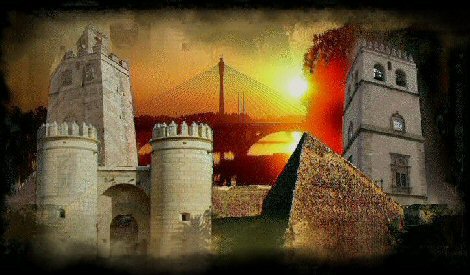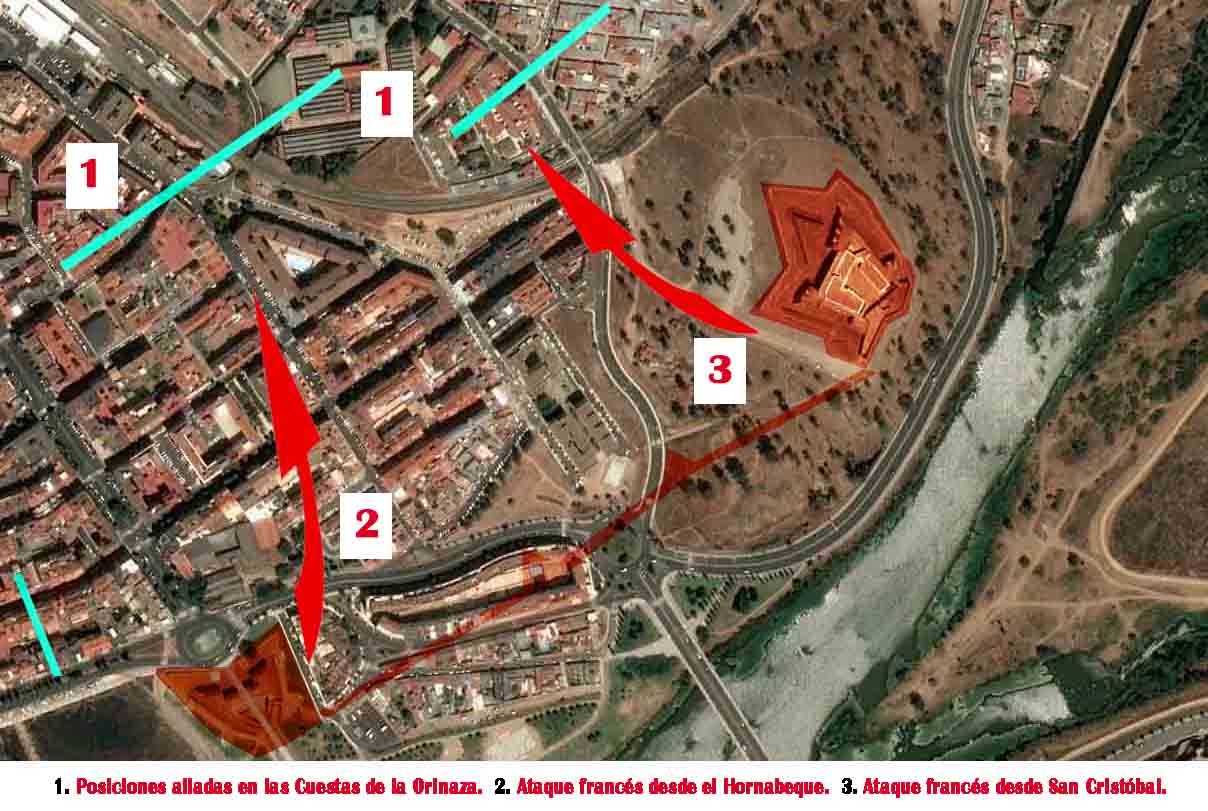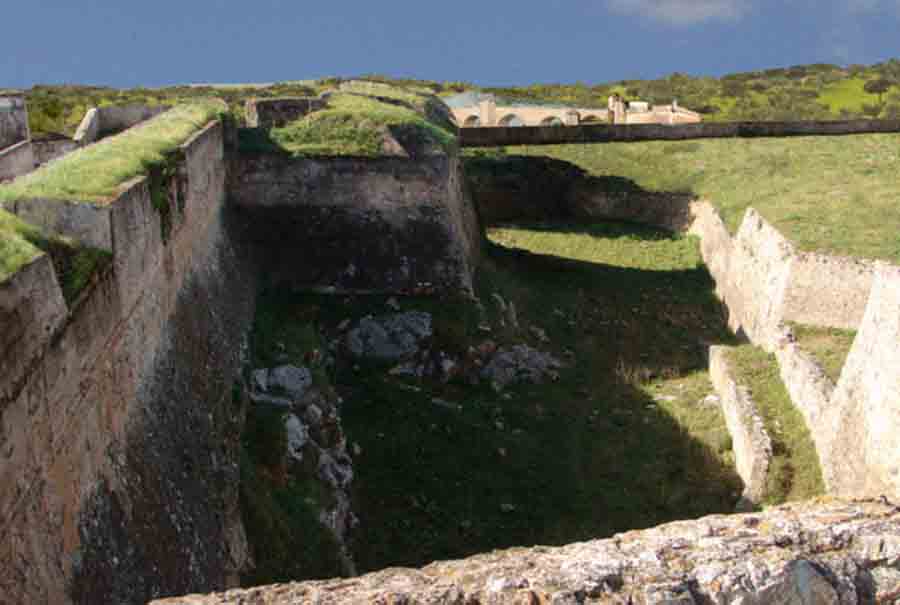|
From the square it was known how
the site positions were taken and as successive forces were incorporated
into the next operations. The first days of May ran without clashes. The
weather became very rainy in such a way that large areas around the city
were flooded, making it difficult to siege. Engineers designed the
construction of a dam at the height of the Rivillas bridge, so that the east
front of the fortress was flooded, from the reveline of San Roque to the
bastion of Santa Maria.
Simultaneously on the west front, next to the
Guadiana, mine galleries were opened ready to activate at the right time.
On May 3, General Beresford
approaches the square, proceeding to take positions and close the fence, in
order to start the operations that make possible the recovery of the square.
To do this, it has a force of 12,000 men from the Portuguese army, who took
the different heights surrounding the city, expelling the French detachments
stationed there. On April 4, a mass of some 6,000 infantrymen appeared on
the road to Talavera, followed by artillery and tanks, which occupied the
small elevations surrounding the city. The enemy initiated approaches to the
glacis to recognize the positions and batteries of the square, pushing them
back immediately.
On the 6th by the way of the
Albuera, parliamentarians approached who showed a letter from General
Sttevart, informing of the total encirclement of the square, and warning the
governor that under no pretext would allow the passage of civilians among
the Allied ranks. To this letter, the French general replied by saying that
civilians who wished would be allowed to leave the square, but not the
return. That they proceeded accordingly. On the 8th morning another column
was positioned by the heights of Santa Engracia, facing the garrison there
prominently, which was supported by the fire of the fort of San Cristobal.
Although the beitiators suffered heavy casualties, the French had to abandon
their positions, retreating to the city. On the same day trenches were
opened 400 meters from San Cristobal and 1000 meters from the forts of
Picuriña and Pardaleras.
Two days later, from Cabeza
del Puente and San Cristobal, infantry troops and cavalry charged against
parallels and batteries to the north, surprising the enemy and destroying
the construction sites. The Allied counter-checkup resulted in 18 deaths and
more than 100 injuries among the French and their loss of 400 men. On the
11th the Allied batteries, san Cristobal, who responded vividly with his
pieces, to which his fire was joined by those of the castle's height.
|

Troop movement on the current plane of the city |







